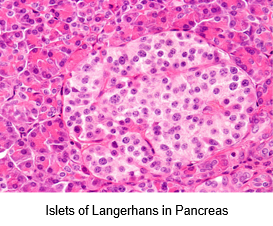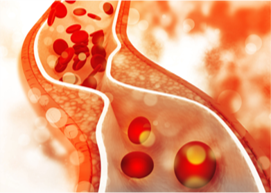ELISA / Assay Kits (Metabolism)
Metabolism is an essential function for maintaining the life of organisms. An imbalance in metabolism causes various diseases. Fujifilm Wako provides "LabAssay™", a series of assay kits for biochemical test, and their use has been cited in more than 1,000 academic papers in total. Fujifilm Wako also has a lineup of measurement kits of albumin, insulin, and glucagon.
Biochemical Assay Kits - LabAssay™ Series -
LabAssay™ series is an assay kits for biochemical test. With the use of a microplate, these kits provide a quick and convenient method for measuring in animal samples.
[Note] LabAssay™ series are reagents for research purposes. They cannot be used for diagnostic purposes.
| Product No. | Product Name | Analysis Sample* | Target Animals | Calibration curve range | Sample volume | Measurement duration | Package Size |
|---|---|---|---|---|---|---|---|
| For microplate reader | |||||||
| 297-93501 | LabAssay™ ALP | Serum, Plasma, Cell culture supernatant |
Mouse, Rat, Dog, Cat | 0.0625-0.5 mmol/L *p-nitrophenol |
20 μL | 20 min | 500 tests |
| 297-94601 | LabAssay™ Ammonia | Blood, Serum, Plasma, Cell culture supernatant** |
Mouse, Rat, Dog, Cat | 100-400 μg/dL | 70 μL | 70 min | 700 tests |
| 293-96901 | LabAssay™ ATX | Serum, Plasma (Heparin), Cell culture supernatant** |
Human, Mouse, Rat | 1.72-55 U/L | 10 μL | 40 min | 150 tests |
| 293-93601 | LabAssay™ Cholesterol | Serum, Plasma, Cell culture supernatant |
Mouse, Rat, Dog, Cat | 50-592 mg/dL | 2 μL | 10 min | 500 tests |
| 299-96501 | LabAssay™ HDL-Cholesterol | Serum, Plasma | Mouse, Rat | 6.25-200 mg/dL | 5 μL | 20 min | 100 tests |
| 291-96701 | LabAssay™ LDL-Cholesterol | Serum, Plasma | Mouse, Rat | 9.38-300 mg/dL | 5 μL | 20 min | 100 tests |
| 291-93901 | LabAssay™ Creatinine | Serum, Plasma, Urine | Mouse, Rat, Dog, Cat | 2.5-10 mg/dL | 50 μL | 40 min | 500 tests |
| 291-94001 | LabAssay™ Glucose | Serum, Plasma | Mouse, Rat, Dog, Cat | 50-500 mg/dL | 2 μL | 10 min | 500 tests |
| 295-94401 | LabAssay™ Phospholipid | Serum, Plasma, Cell culture supernatant |
Mouse, Rat, Dog, Cat | 75.0-596.1 mg/dL | 2 μL | 10 min | 500 tests |
| 291-94501 | LabAssay™ Triglyceride | Serum, Plasma | Mouse, Rat, Dog, Cat | 100-888 mg/dL | 2 μL | 10 min | 350 tests |
* Please see the product details page for the results of other samples reported in the paper.
** Measurement availability depends on the culture medium.
Product Line-up
More Information
Organisms take-in carbohydrates, proteins, lipids, inorganic salts, etc., and synthesize substances necessary for life activities or produce energy. Although such metabolism is essential for life activities, an imbalance in metabolism can lead to various diseases. Particularly, people with metabolic syndrome, in which visceral fat-type obesity is combined with abnormalities in blood pressure, blood glucose, and lipids, are said to be at high risk for arteriosclerosis, diabetes mellitus, and nonalcoholic steatohepatitis (NASH).
Carbohydrate Metabolism

After being digested and absorbed from carbohydrates in food, glucose enters the blood and is carried throughout the body to be used as energy for cells. Insulin, secreted by beta cells of the islets of Langerhans in the pancreas, promotes the uptake of glucose into cells. Insulin is produced by the cleavage of proinsulin into insulin and C-peptide.
Excess glucose is converted into a polysaccharide called glycogen, and stored in the liver and muscle as an energy source. During fasting, stored glycogen is decomposed into glucose by glucagon or the like and used as energy.
Diabetes mellitus is a disease in which blood glucose concentration is chronically elevated due to lack or insufficient function of insulin. If the disease progresses, complications such as retinopathy, nephropathy, and neuropathy occur, and it may lead to cerebral stroke and ischemic heart diseases. In nephropathy caused by diabetes mellitus (diabetic nephropathy), urinary albumin and blood creatinine change with decreased renal function.
Insulin control is important in the treatment of diabetes, and related hormones have been clarified. A gastrointestinal hormone secreted by intestinal L cells, GLP-1, lowers the blood glucose level by enhancing insulin secretion and inhibiting glucagon secretion. GIP, a gastrointestinal hormone secreted by duodenal K cells, acts on β cells to promote insulin secretion.
Lipid Metabolism

Lipids are components of the plasma membrane and are used to produce hormones and bile acids. In addition, they are also used as an energy source similar to glucose. Cholesterol, neutral fats (such as triglyceride), phospholipids, and non-esterified fatty acids (NEFA) exist in the blood.
After being digested and absorbed from food, lipids form a complex called chylomicron (CM). Chylomicron is then converted to chylomicron remnant (CML), which is taken up by the liver. Apolipoprotein B-48 (ApoB-48) in CM and CML is considered useful for investigating the kinetics of dietary lipids.
Very-low-density lipoprotein (VLDL) is synthesized and released by the liver and becomes low-density lipoprotein (LDL), which transports cholesterol and other substances to peripheral tissues. On the other hand, high-density lipoprotein (HDL) is involved in cholesterol transport from peripheral tissues to the liver and is ultimately taken up by the liver.
Generally, cholesterol in LDL is called “bad cholesterol,” and cholesterol in HDL is called “good cholesterol.” If the level of bad cholesterol or neutral fat is high or the level of good cholesterol is low, risk of arteriosclerosis and the like is considered to be high. Fat accumulation in the liver deteriorates liver function, which makes the metabolism of harmful ammonia to urea difficult.
Abnormal lipid metabolism, mentioned above, also causes abnormal secretion of adipocytokines such as adiponectin, which controls the metabolism of lipids and carbohydrates, leading to further progression of diabetes mellitus and arteriosclerosis.
Hormonal Feeding Control
The energy supply can be regulated by controlling not only metabolism in the body but also food intake. The hypothalamic nerve nuclei of the brain are responsible for regulation of food intake, the pro-opiomelanocortin (POMC) neurons suppress food intake, and the neuropeptide Y (NPY) or agouti-related peptide (AgRP) neurons promote food intake. Leptin, which is known as an appetite-suppressing hormone, has inhibitory effects on the NPY/AgRP neurons. Feeding regulation signals are also secreted in the digestive tract, and a peptide PYY, which is secreted after meals from L-type cells distributed in the intestine, exhibits inhibitory effect on food intake through blood and the pneumogastric nerve.
References
- Ministry of Health, Labour and Welfare: https://www.e-healthnet.mhlw.go.jp/ (Dec. 17th, 2022). (Japanese)
- Minokoshi, Y.: “Molecular mechanisms of appetite regulation”, Yodosha, Japan, vol.32, p.399(2014). (Japanese)
Product Line-up
For research use or further manufacturing use only. Not for use in diagnostic procedures.
Product content may differ from the actual image due to minor specification changes etc.
If the revision of product standards and packaging standards has been made, there is a case where the actual product specifications and images are different.




